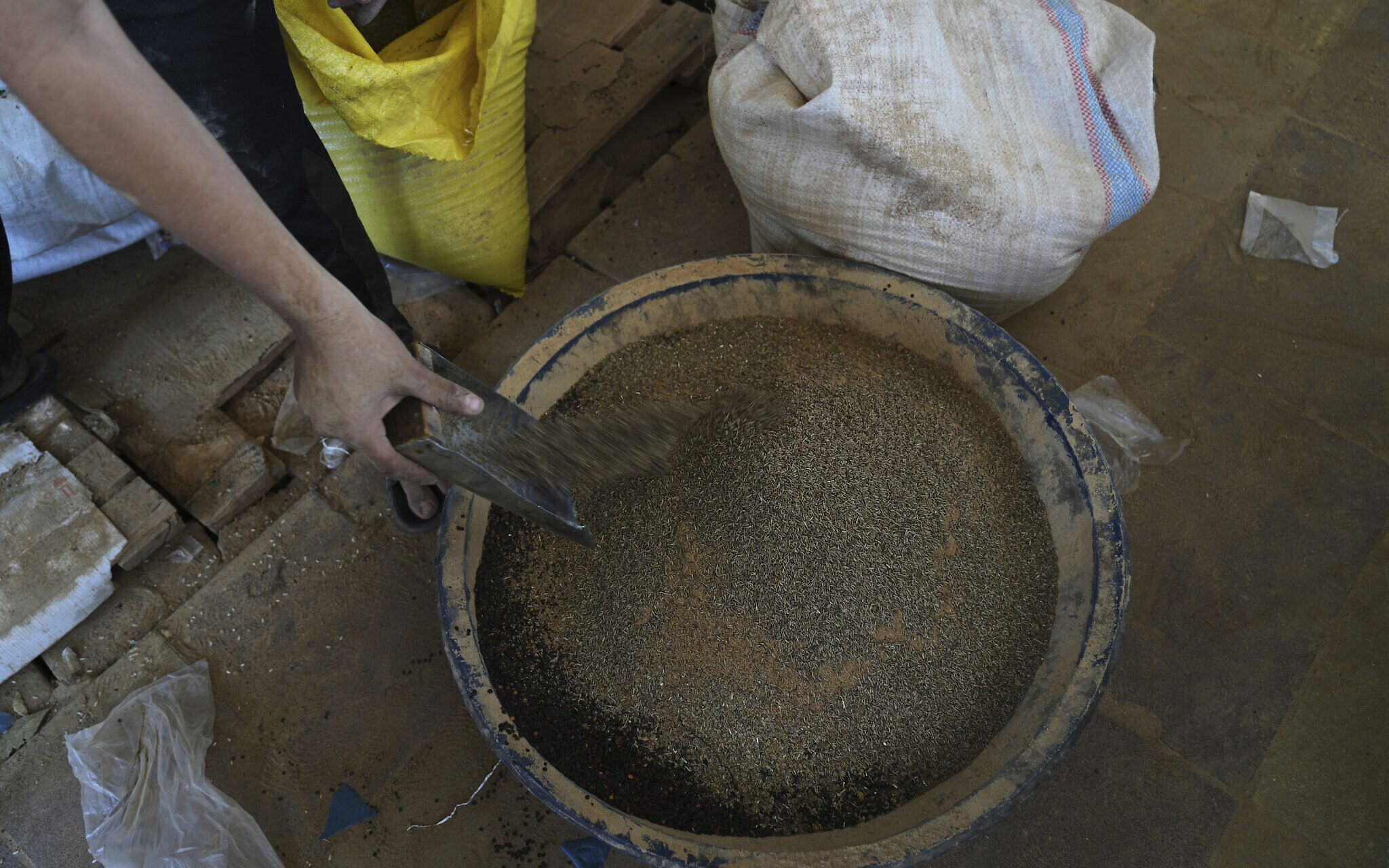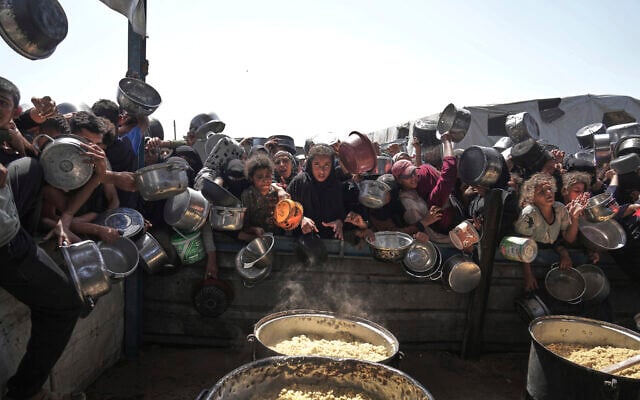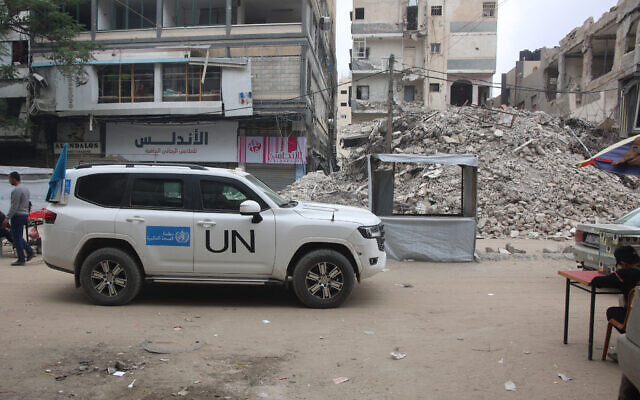



The Gaza Strip is at critical risk of famine if Israel doesn’t lift its blockade and stop its military campaign against Hamas, food security experts said in a stark warning on Monday.
Outright famine is the most likely scenario unless conditions change, according to findings by the Integrated Food Security Phase Classification, a leading international authority on the severity of hunger crises.
Nearly half a million Palestinians are in “catastrophic” levels of hunger, meaning they face possible starvation, the report said, while another million are at “emergency” levels of hunger.
However, the organization has been mistaken in its assessments before. In June 2024, it admitted that its assumption that famine would take place earlier that year was wrong. In February, a review conducted by the UK Lawyers for Israel organization into allegations of famine by international review bodies found that no famine had taken place during the war, and that such reports were inaccurate.
Israel has banned any food, shelter, medicine, or other goods from entering the Palestinian territory for the past 10 weeks, as it carries out waves of airstrikes and ground operations. Even before the war, Gaza’s population of around 2.3 million people relied almost entirely on outside aid to survive, with a United Nations report in 2022 noting 60 percent of Palestinians in the Strip require assistance.
Food supplies are emptying out dramatically. Communal kitchens handing out cooked meals are virtually the only remaining source of food for most people in Gaza now, but they too are rapidly shutting down for lack of stocks.
Thousands of Palestinians crowd daily outside the public kitchens, pushing and jostling with their pots to receive lentils or pasta.
“We end up waiting in line for four, five hours, in the sun. It is exhausting,” said Riham Sheikh el-Eid, waiting at a kitchen on Sunday. “At the end, we walk away with nothing. It is not enough for everybody.”
The lack of a famine declaration doesn’t mean people aren’t already starving, and a declaration shouldn’t be a precondition for ending the suffering, said Chris Newton, an analyst for the International Crisis Group focusing on starvation as a weapon of war.
“The Israeli government is starving Gaza as part of its attempt to destroy Hamas and transform the Strip,” he said.
The office of Prime Minister Benjamin Netanyahu did not respond to a request for comment. The army has said that enough assistance entered Gaza during a two-month ceasefire that Israel shattered in mid-March when it relaunched its military campaign.
Israel says the blockade aims to pressure Hamas to release the 59 hostages it still holds. It says it won’t let aid back in until a new system giving it control over distribution is in place, accusing Hamas of siphoning off supplies.
The United Nations denies substantial diversion of aid is taking place. It says the new system Israel envisages is unnecessary, will allow aid to be used as a weapon for political and military goals, and will not meet the massive needs of Palestinians.
The United States says it is working up a new mechanism that will start deliveries soon, but it has given no timeframe. The UN has so far refused to participate, saying the plan does not meet humanitarian standards.
The plans involve providing aid by using private American security contractors to secure aid distribution hubs within the Strip. According to officials briefed on the plan, five to six thousand vetted representatives will be allowed to travel on foot to the aid hubs once every two weeks in order to pick up a roughly 40-pound box of food for their families.
Monday’s report said that any slight gains made during the ceasefire have been reversed. Nearly the entire population of Gaza now faces high levels of hunger, it said, driven by conflict, the collapse of infrastructure, destruction of agriculture, and blockades of aid.
Commenting on the report, the head of the UN Food and Agriculture Organization said any delay in restoring the flow of aid “bringing us closer to famine.”
“If we fail to act, we are failing to uphold the right to food, which is a basic human right,” FAO Director-General QU Dongyu said.
The Hamas-led massacre that sparked the war saw thousands of terrorists storm southern Israel to kill some 1,200 people, mostly civilians, and take 251 hostages.
The Hamas-run Gaza health ministry says more than 52,000 people in the Strip have been killed or are presumed dead in the fighting so far, though the toll cannot be verified and does not differentiate between civilians and fighters. Israel says it has killed some 20,000 combatants in battle as of January and another 1,600 terrorists inside Israel on October 7.
Israel has said it seeks to minimize civilian fatalities and stresses that Hamas uses Gaza’s civilians as human shields, fighting from civilian areas including homes, hospitals, schools, and mosques.
The Integrated Food Security Phase Classification, set up in 2004 during the famine in Somalia, groups more than a dozen US agencies, aid groups, governments, and other bodies.
It has only declared famine a few times — in Somalia in 2011, and South Sudan in 2017 and 2020, and last year in parts of Sudan’s western Darfur region. Tens of thousands are believed to have died in Somalia and South Sudan.
It rates an area as in famine when at least two of three things occur: 20 percent of households have an extreme lack of food, or are essentially starving; at least 30% of children six months to five years suffer from acute malnutrition or wasting, meaning they’re too thin for their height; and at least two people or four children under five per every 10,000 are dying daily due to starvation or the interaction of malnutrition and disease.
The report found that the first threshold was met in Gaza, saying 477,000 people — or 22% of the population — are classified as in “catastrophic” hunger for the period from May 11 to the end of September, and another million area at “emergency” levels, meaning they face very large gaps in food and high levels of acute malnutrition.
The malnutrition and death thresholds were not met. The data was gathered in April and up to May 6. Food security experts say it takes time for people to start dying from starvation.
The report warned of “imminent” famine in northern Gaza in March 2024, but the following month, Israel allowed an influx of aid under US pressure after an Israeli strike killed seven aid workers.
Aid groups now say the situation is the most dire of the entire war. The UN humanitarian office, known as OCHA, said on Friday that the number of children seeking treatment at clinics for malnutrition has doubled since February, even as supplies to treat them are quickly running out.
Aid groups have shut down food distribution due to a lack of stocks. Many foods have disappeared from the markets, and what’s left has spiraled in price and is unaffordable to most. Farmland is mostly destroyed or inaccessible. Water distribution is grinding to a halt, largely because of a lack of fuel.



